| No. | Portrait | Name
(Birth–Death) | Term of office | Political party | Government | Ref. |
|---|
| Took office | Left office | Time in office |
|---|
| Minister of the Colonies |
|---|
| 1 |  | Pietro Bertolini
(1859–1920) | 21 November 1912 | 21 March 1914 | 1 year, 120 days | | Liberal Union | Giolitti IV | [1] |
|---|
| 2 | 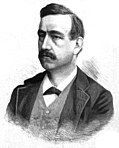 | Ferdinando Martini
(1841–1928) | 21 March 1914 | 18 June 1916 | 2 years, 89 days | | Liberal Union | Salandra I–II | [2] [3] |
|---|
| 3 |  | Gaspare Colosimo
(1859–1944) | 18 June 1916 | 23 June 1919 | 3 years, 5 days | | Liberal Union | Boselli
Orlando | [4] [5] |
|---|
| 4 | 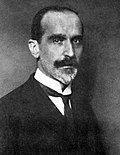 | Luigi Rossi
(1867–1941) | 23 June 1919 | 14 March 1920 | 265 days | | Italian Radical Party | Nitti I | [6] |
|---|
| – | 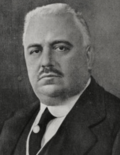 | Francesco Saverio Nitti
(1867–1941)
Acting | 14 March 1920 | 21 May 1920 | 68 days | | Italian Radical Party | Nitti I | [6] |
|---|
| 5 |  | Meuccio Ruini
(1867–1941) | 21 May 1920 | 15 June 1920 | 25 days | | Italian Radical Party | Nitti II | [7] |
|---|
| (4) |  | Luigi Rossi
(1867–1941) | 15 June 1920 | 4 July 1921 | 1 year, 19 days | | Italian Radical Party | Giolitti V | [8] |
|---|
| 6 |  | Giuseppe Girardini
(1856–1923) | 4 July 1921 | 26 February 1922 | 237 days | | Social Democracy | Bonomi I | [9] |
|---|
| 7 | 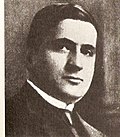 | Giovanni Amendola
(1882–1926) | 26 February 1922 | 30 October 1922 | 246 days | | Democratic Liberal Party | Facta I–II | [10] [11] |
|---|
| 8 | 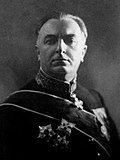 | Luigi Federzoni
(1878–1967) | 26 February 1922 | 3 June 1924 | 2 years, 98 days | | Nationalist Association | Mussolini | [12] |
|---|
| 9 |  | Pietro Lanza di Scalea
(1863–1938) | 3 June 1924 | 6 November 1926 | 2 years, 156 days | | National Fascist Party | Mussolini | [12] |
|---|
| (8) |  | Luigi Federzoni
(1878–1967) | 6 November 1926 | 18 December 1928 | 42 days | | National Fascist Party | Mussolini | [12] |
|---|
| – |  | Benito Mussolini
(1883–1945)
Acting | 18 December 1928 | 12 September 1929 | 268 days | | National Fascist Party | Mussolini | [12] |
|---|
| 10 |  | Emilio De Bono
(1866–1944) | 12 September 1929 | 17 January 1935 | 5 years, 127 days | | National Fascist Party | Mussolini | [12] |
|---|
| – |  | Benito Mussolini
(1883–1945)
Acting | 17 January 1935 | 11 June 1936 | 1 year, 146 days | | National Fascist Party | Mussolini | [12] |
|---|
| 11 |  | Alessandro Lessona
(1891–1991) | 11 June 1936 | 8 April 1937 | 301 days | | National Fascist Party | Mussolini | [12] |
|---|
| Minister of Italian Africa |
|---|
| (11) |  | Alessandro Lessona
(1891–1991) | 8 April 1937 | 20 November 1937 | 226 days | | National Fascist Party | Mussolini | [13] |
|---|
| 12 |  | Benito Mussolini
(1883–1945) | 20 November 1937 | 31 October 1939 | 1 year, 345 days | | National Fascist Party | Mussolini | [13] |
|---|
| 13 |  | Attilio Teruzzi
(1882–1950) | 31 October 1939 | 25 July 1943 | 3 years, 267 days | | National Fascist Party | Mussolini | [13] |
|---|
| 14 |  | Melchiade Gabba
(1874–1952) | 27 July 1943 | 11 February 1944 | 199 days | | Independent | Badoglio I | – |
|---|
| – |  | Pietro Badoglio
(1871–1956)
Acting | 11 February 1944 | 8 June 1944 | 118 days | | Independent | Badoglio I–II | – |
|---|
| – |  | Ivanoe Bonomi
(1873–1951)
Acting | 18 June 1944 | 21 June 1945 | 1 year, 13 days | | Labour Democratic Party | Bonomi II–III | – |
|---|
| 16 |  | Ferruccio Parri
(1890–1981) | 21 June 1945 | 8 December 1945 | 170 days | | Action Party | Parri | [14] |
|---|
| 17 |  | Alcide De Gasperi
(1881–1954) | 10 December 1945 | 19 April 1953 | 7 years, 132 days | | Christian Democracy | De Gasperi I–II–III–IV–V–VI–VII | [15] [16]
[17] [18]
[19] [20]
[21] |
|---|




















